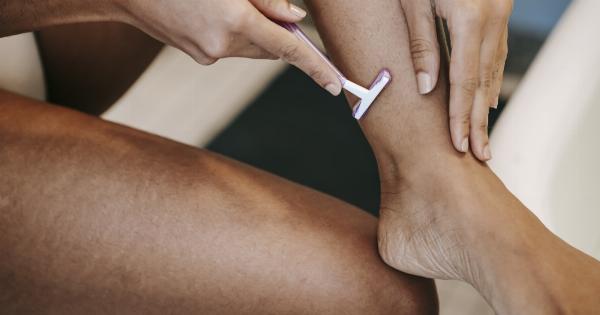Stretch marks are a common skin condition that affect both men and women. They are characterized by jagged lines and indentations that appear in various areas of the body, such as the stomach, thighs, hips, and breasts.
They are most common in women who have experienced pregnancy, but can also develop in individuals who have undergone rapid weight gain or loss.
What Are Stretch Marks?
Stretch marks are a type of scarring that occurs when the skin stretches beyond its limit. When the skin is forced to stretch too quickly, the connective fibers in the skin become damaged, resulting in stretch marks.
Stretch marks are most commonly seen on the abdomen, breasts, hips, thighs, and buttocks.
The Science Behind Stretch Marks
Stretch marks occur when the skin’s elastic fibers are stretched beyond their capacity, causing microscopic tears in the dermis. This damage triggers an inflammatory response, which leads to the formation of scar tissue.
Stretch marks start out red or purple in color, and gradually fade to white or silver over time.
Who is at Risk for Stretch Marks?
Anyone can develop stretch marks, but they are more common in certain groups of people. Pregnant women, for example, are at a higher risk of developing stretch marks due to the rapid growth of the uterus.
Adolescents who experience a sudden growth spurt may also develop stretch marks. People who gain a significant amount of weight or who participate in body-building activities may also develop stretch marks.
Prevention of Stretch Marks
While stretch marks cannot be entirely prevented, there are a few things you can do to minimize their appearance or even avoid them altogether. One of the most effective ways to prevent stretch marks is to maintain a healthy weight.
Rapid weight gain or loss can increase the risk of developing stretch marks. Staying hydrated by drinking plenty of water can also help keep the skin plump and elastic.
Treating Stretch Marks
If you do develop stretch marks, there are several treatment options available. Chemical peels can help fade the appearance of stretch marks. Topical creams and lotions can also help reduce their appearance.
In-office treatments such as laser therapy and microdermabrasion can also be effective in treating stretch marks.
Conclusion
Stretch marks are a common and often unpreventable skin condition that can be caused by a variety of factors, including pregnancy, weight gain or loss, and growth spurts.
While they cannot be completely eliminated, there are several treatment options available to help fade their appearance. By maintaining a healthy weight and staying hydrated, you can minimize your risk of developing stretch marks.





























